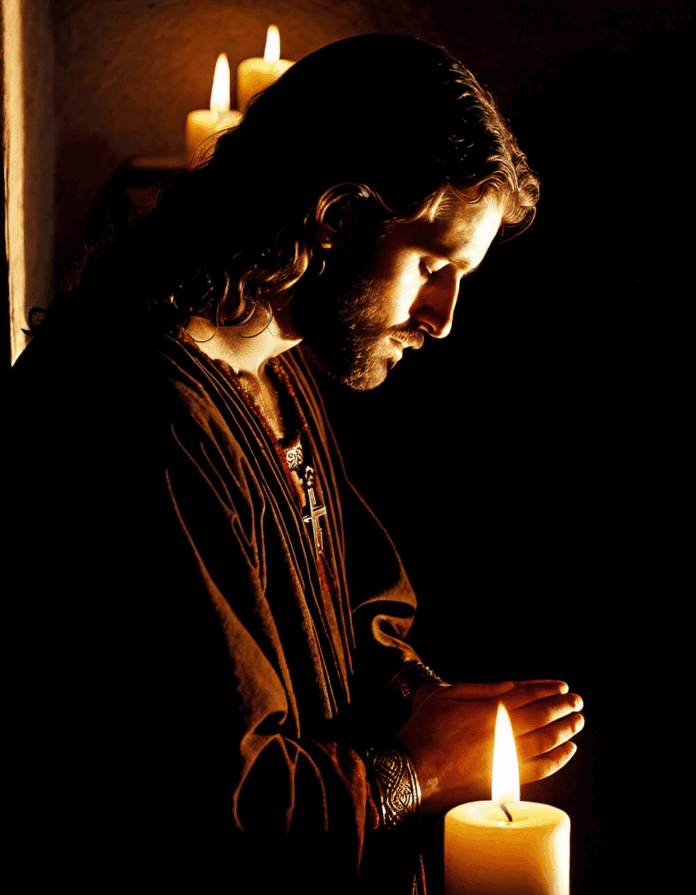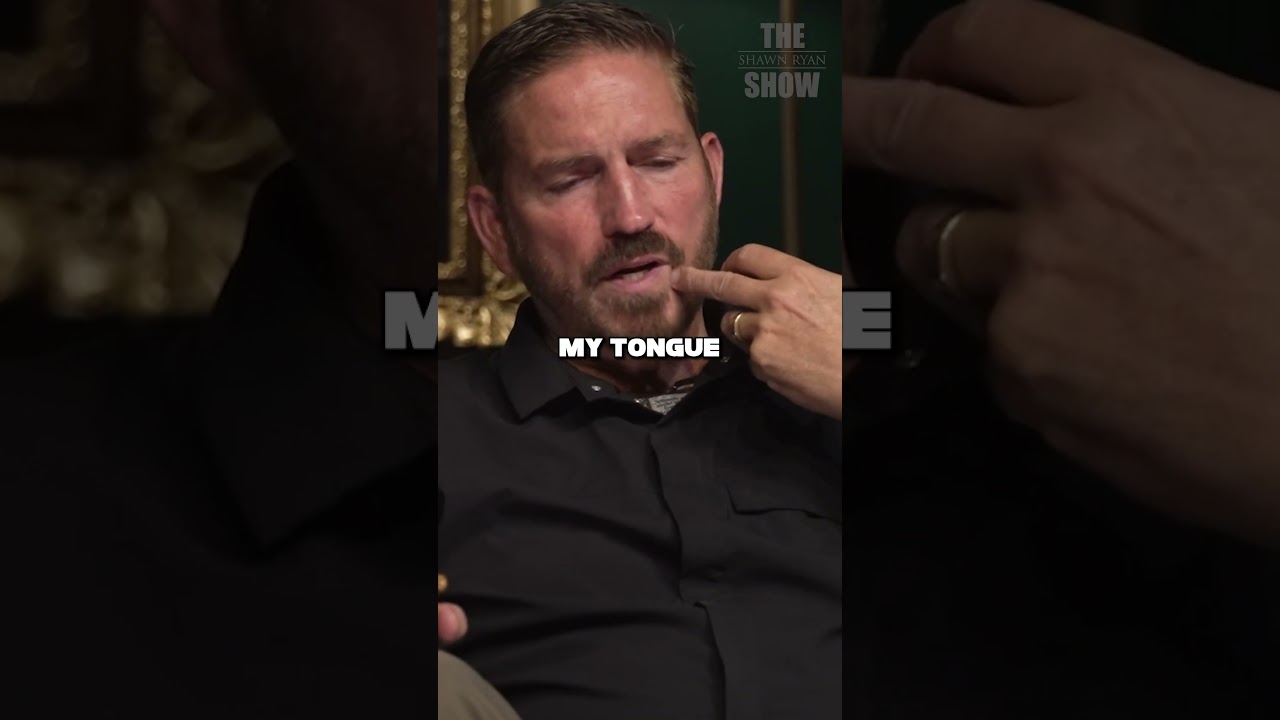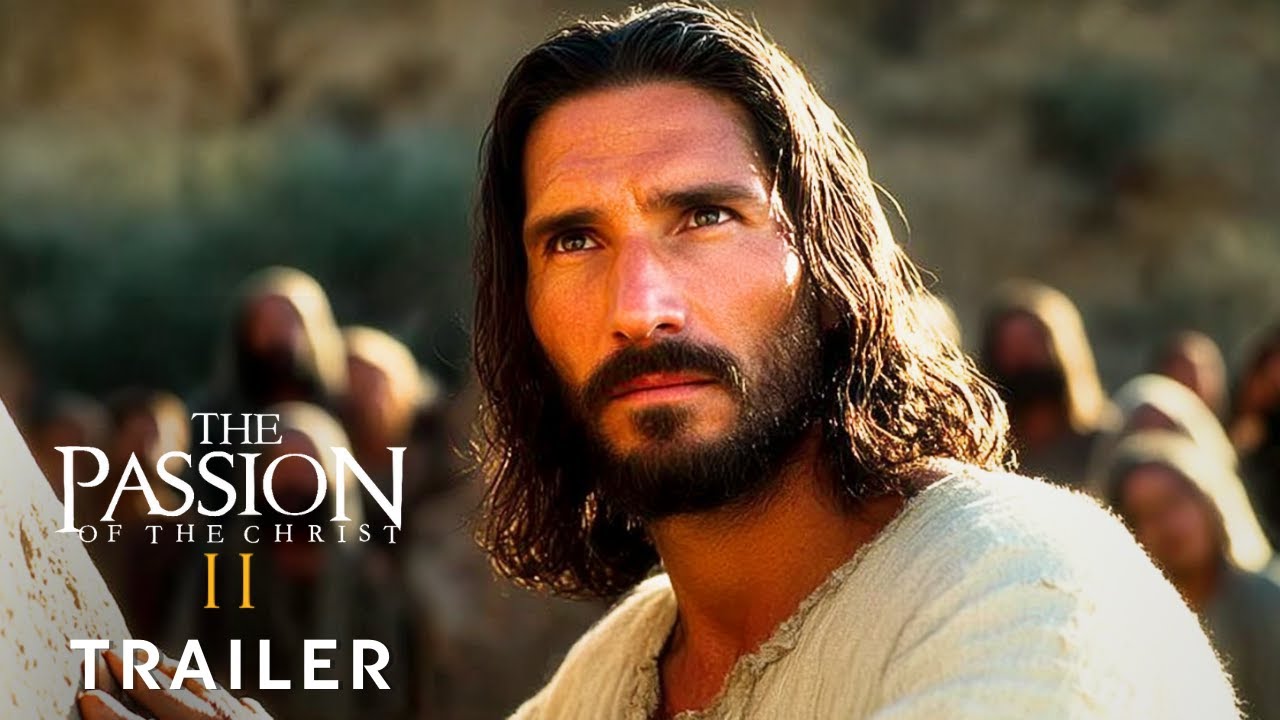“The Passion of the Christ,” directed by Mel Gibson and released in 2004, still resonates profoundly in cinematic history. This film is renowned for its intense portrayal of the final days of Jesus Christ, marked by a level of raw emotion that has struck chords across the globe. The multifaceted conversations it has ignited range from debates about faith and sacrificial love to discussions about violence in cinema and cultural representation. Here, we delve deeper into the narrative and artistic merits of this landmark film, exploring how it continues to captivate audiences more than two decades later.
The film employs an immense emotional landscape, using visuals and language to pull viewers into an intimate experience. Through its haunting visuals and a soundtrack that echoes with despair and hope, it leaves an indelible mark, prompting discussions about spirituality and human suffering. The artistic choices made by Gibson, particularly utilizing Aramaic and Latin, aimed to heighten authenticity, thereby immersing the audience in a historical context. This stylistic decision also set the stage for future filmmakers to explore biblical storytelling with more depth and sincerity.
Additionally, “The Passion of the Christ” ignited a new conversation around the depiction of faith in film, influencing how religious narratives could be portrayed. It faced criticism as much as it garnered admiration, and this duality adds layers to its cultural implications. As conversations surrounding the film evolve, they touch upon larger themes of violence, morality, and human experiences—a testament to the film’s power in interpreting fundamental questions of existence.
Top 5 Emotional Themes in The Passion of the Christ That Challenge Viewers
The film intricately weaves a tapestry of emotional themes, each contributing significantly to its compelling nature. Let’s unpack five themes showcasing why “The Passion of the Christ” holds a special place in the hearts of its viewers.
1. Sacrifice and Redemption
At its core, “The Passion of the Christ” conveys strong messages about sacrifice and redemption. Jesus’s trials and crucifixion illustrate how deep love often comes with deep sacrifice. Viewers can’t help but relate to this theme in their personal lives, reflecting on their sacrifices for family, friends, or passions. It ignites a powerful sense of reflection, inspiring people to sacrifice for others, embodying ultimate love.
2. Suffering and Humanity
The portrayal of suffering in the film is brutal yet stunningly human. From the horrifying flogging scene to the heartrending image of Jesus bearing his cross, the audience is taken on an emotional journey. This unfiltered depiction of pain transcends captivating visuals, urging viewers to grapple with their hardships and extend empathy to others. The film parts the curtain on our shared humanity, prompting deeper conversations about suffering in our own lives and communities.
3. Faith and Doubt
Navigating the tug-of-war between faith and doubt, “The Passion of the Christ” provides a textured view of belief. Several characters wrestle with their convictions, echoing struggles many face. This ambiguity stirs introspection and dialogue across various religious and secular communities, prompting examination of the complexities in their beliefs. The film doesn’t just showcase faith; it embodies the conflict that often accompanies it.
4. Betrayal and Forgiveness
Within the narrative, betrayal, as seen through Judas Iscariot, casts a long shadow. However, juxtaposed with betrayal is an invitation to forgiveness. Jesus’s final words, extending grace even to those who wronged him, serve as a poignant reminder of the cost of reconciliation. Audiences are left to ponder their encounters with betrayal and the ladders they must climb to embrace forgiveness, allowing for healing and growth.
5. The Role of Women in the Narrative
The film provides a striking depiction of women, particularly the character of Mary, Jesus’s mother. Her journey reflects both agony and resilience, allowing viewers to connect emotionally. This characterization has invigorated feminist discussions, prompting reassessments of women’s roles not only in religious narratives but in broader societal contexts. Mary represents strength and compassion, reminding us that women’s voices and experiences must be acknowledged.

The Lasting Impact of The Passion of the Christ on Filmmaking
With its groundbreaking approach, “The Passion of the Christ” redefined how biblical stories can be adapted for film. Gibson’s choice to employ Aramaic and Latin added authenticity, setting a new standard in the industry. This bold move paved the way for future filmmakers, inspiring films like “Son of God” (2014) and “Last Days in the Desert” (2015), encouraging them to explore and embrace deeper narrative techniques.
In financial terms, the impact of “The Passion of the Christ” is undeniable. The film grossed over $600 million worldwide, making it one of the highest-grossing R-rated films of all time. Such astounding success illustrates the appetite for religious and spiritual narratives within mainstream cinema. It has also sparked financial discussions surrounding the production of themed films, influencing studio decisions for years to come.
However, this financial win wasn’t without its share of controversies. Critics often highlighted its graphic violence and the interpretation of historical events, raising questions about the responsibilities of filmmakers when depicting sensitive subject matter. The polarizing discussions it incited have left a lasting imprint on how religious stories can be portrayed.
Emotional Reactions: Audience Responses Over the Years
Since its release, audience reactions to “The Passion of the Christ” have spanned from fervent admiration to pointed critique. Some viewers describe experiencing deep spiritual awakenings, feeling personally touched by the powerful portrayal of Jesus’s journey. Others, however, express discomfort with the film’s graphic violence, arguing it diminishes the core message of compassion and love.
The internet has offered a platform for these divergent sentiments, often allowing discussions to bleed into broader cultural contexts. Reception varies significantly between demographics and geographical locations. For instance, in more conservative regions, the film often receives stronger praise, while in liberal circles, critiques may center on its violent portrayal of Christ’s suffering and how that relates to broader narratives in contemporary society.
With platforms like social media becoming the pulse of audience reactions, the ability to gauge emotional responses has shifted dramatically. This film has not only sparked film critiques but deeper societal discussions about faith, violence, and, ultimately, the human condition.
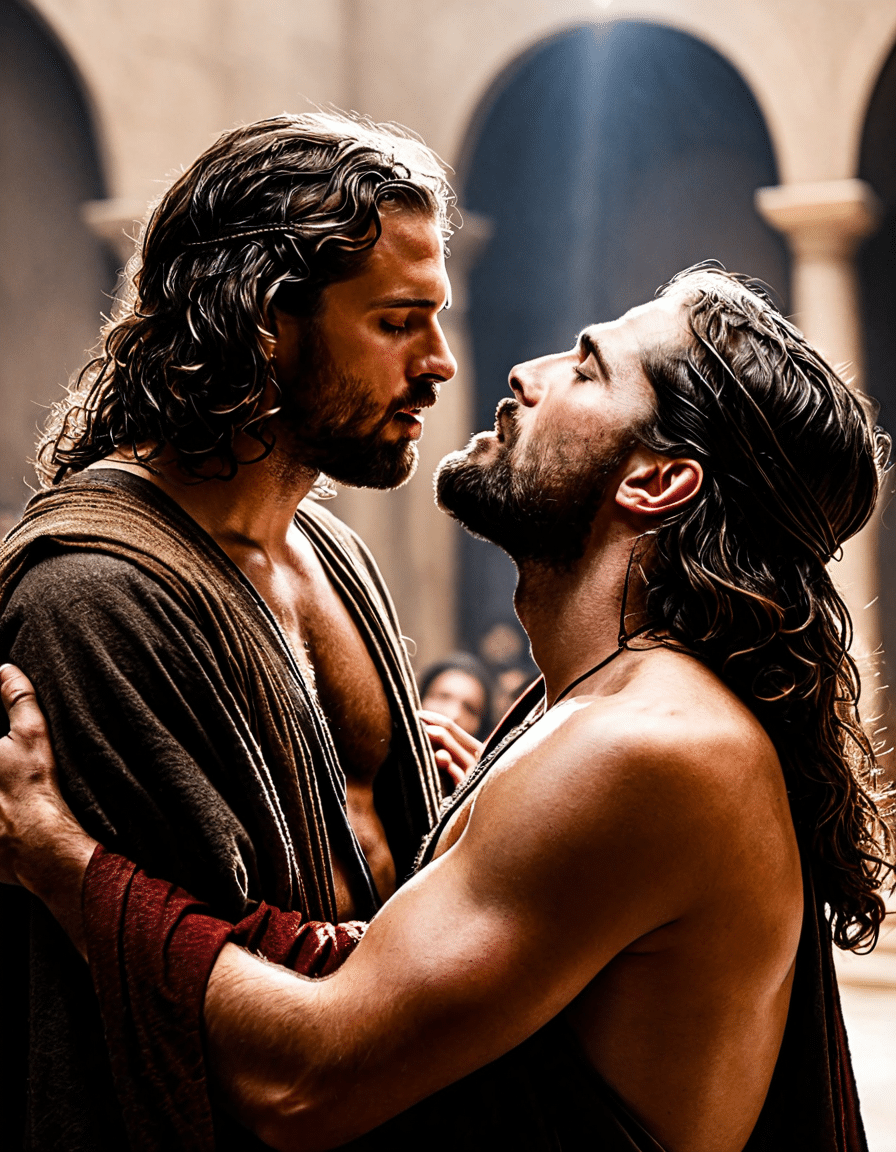
Cultural Legacy and Future Relevance of The Passion of the Christ
The cultural legacy of “The Passion of the Christ” extends far beyond the silver screen. It has inspired countless charitable initiatives, theater productions, and documentaries, enriching conversations surrounding its themes. In an age where discussions of compassion and humanity seem increasingly critical, this film remains relevant.
Furthermore, contemporary social climates have brought elements of forgiveness, empathy, and communal support to the forefront. The film’s enduring themes encourage reflections not only on faith but also on our collective responsibility in today’s divisive world. As societies evolve, so too does the film’s significance, continually challenging audiences to confront their beliefs and behaviors.
Creative Exploration: Future Adaptations and Artistic Interpretations
With the film industry’s leaning toward reboots and remakes, the potential for future adaptations of “The Passion of the Christ” exists. Could filmmakers harness cutting-edge CGI and modern narrative styles to offer new interpretations? As society’s views on faith and storytelling evolve, fresh explorations could resonate with a whole new generation. Whether through animated features or immersive live-action experiences, the possibilities are vast.
Additionally, drawing from the legacy of figures like Anthony Robles, who overcame adversity, could inspire new narratives infused with contemporary issues, creating connections between past and present. A new adaptation may explore the emotional depths of its characters further, providing avenues for viewers to engage with themes of love, sacrifice, and redemption in today’s world.
In conclusion, “The Passion of the Christ” is more than just a retelling of a historical narrative or a cinematic feat; it dives deep into the emotional state of humanity. By engaging with themes that hit home, it allows viewers to reflect not only on the lives portrayed onscreen but also on their own beliefs and personal journeys. As conversations around faith and community continue to evolve, works like this remain crucial in fostering understanding, empathy, and dialogue in our divided society.
The Passion of the Christ: Captivating Trivia and Fascinating Facts
Behind the Scenes of a Cinematic Masterpiece
Did you know that The Passion of the Christ was filmed in Aramaic, Latin, and Hebrew to create an authentic feel? Mel Gibson’s commitment to realism not only struck a chord with audiences but also became a talking point among critics. While the film faced its share of controversy, it made waves at the box office, grossing over $600 million globally. That revenue could’ve bought a truckload of HP Laptops for students in need! This blend of faith and filmmaking truly left a mark on cinema history.
Interestingly, the film’s impact extended beyond just ticket sales. Its release prompted conversations about forgiveness and sacrifice. People even looked for ways to connect further with such themes—be it through reading spiritual texts or discussing it over a relaxing outing with their four-legged friends. Speaking of dogs, for pet owners, having to learn how to keep My dog calm in car ride situations might make those movie trips a lot easier. And if you’re unsure about your financial dealings while engaging in profound discussions about faith, you might consider looking into a Barclaycard to help time the expenses.
Cultural Impact and Legacy
Upon its release, The Passion of the Christ not only sparked debates but also ignited a surge of interest in faith-based films. It opened doors for discussions about the historical implications of Christ’s life. Fans of epic narratives even found themselves comparing it to other genre-defining films, like those involving Cowboys or warriors—just consider its emotional intensity akin to legendary stories such as the War Of The Rohirrim. The film transcended borders, pushing the envelope of how religious stories can be portrayed on screen.
Moreover, it shaped a generation’s understanding of sacrifice and redemption, leading many to reflect on their own lives and beliefs. This robust impact often transcends into everyday life as individuals seek more peace and connection with their communities, sometimes through work at home Jobs, as they aim for a better balance. Just like a chat over a smooth New york smoke, these moments of reflection can build strong bonds, making this particular narrative resonate deeply in the tapestry of cinema and spirituality.
The Passion of the Christ wasn’t just a film; it was a cultural phenomenon that left viewers thinking long after the credits rolled. All these factors combined make it a compelling piece worth revisiting, whether you’re analyzing its artistic merits or simply enjoying thoughtful discussions with friends. So next time you catch a screening, you might just find yourself exploring deeper themes and connections along the way!
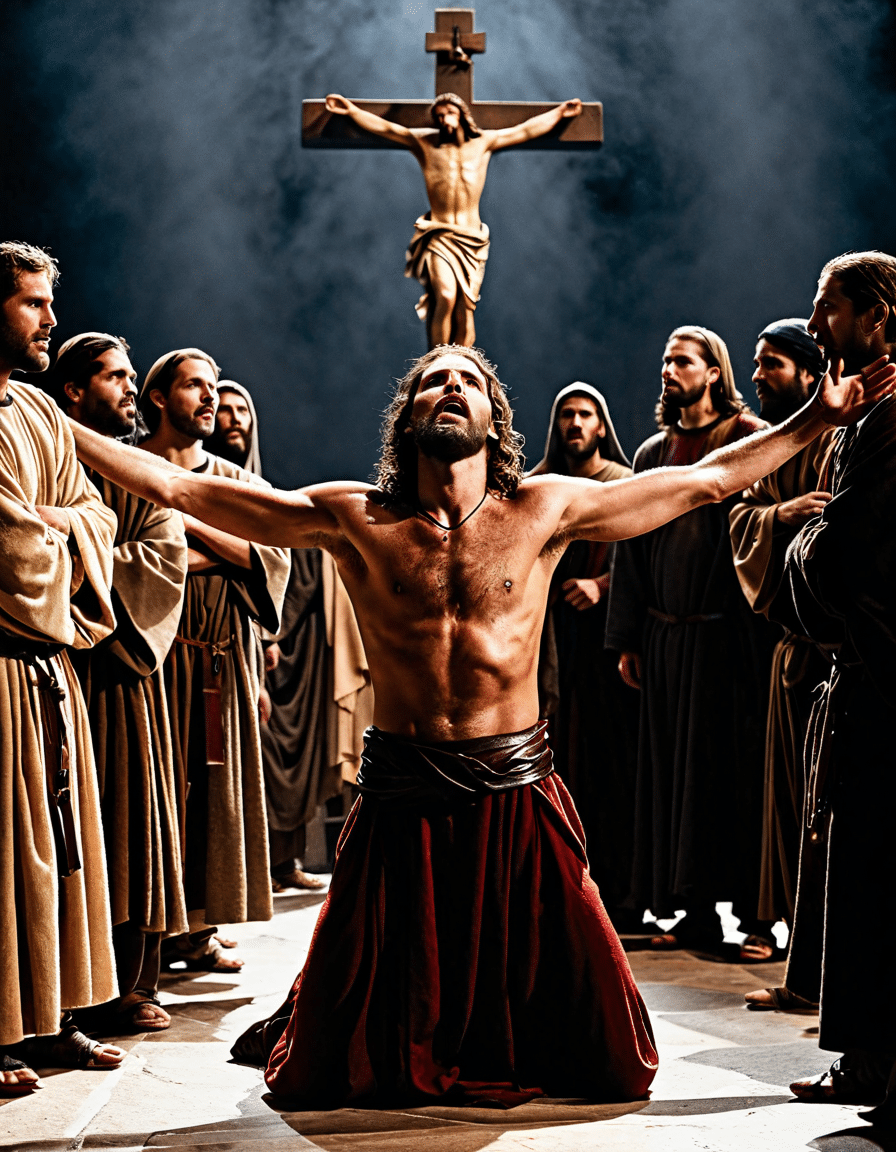
Why was Passion of Christ so controversial?
The Passion of the Christ stirred up controversy mainly due to its intense portrayal of violence and the belief that it could incite anti-Semitic sentiments. Critics argued that the film’s focus on Jewish responsibility for Jesus’ death was problematic, sparking discussions about historical interpretation and faith.
How historically accurate is Passion of the Christ?
While the film takes several liberties for dramatic effect, it does draw heavily from the Gospels, attempting to realistically depict the last hours of Jesus’ life. Many historians note that it captures the emotional and spiritual essence of the biblical account, though not all details align with historical consensus.
What happened to Jim Caviezel during the filming of The Passion of the Christ?
During the filming, Jim Caviezel, who portrayed Jesus, suffered several injuries, including dislocation of his shoulder and hypothermia, and he even reported being struck by lightning—an experience he described as surreal and intense.
What happened on the set of Passion of Christ?
The set saw its fair share of dramatic events, from the challenges of filming in extreme weather to Jim Caviezel’s near-misses with lightning. These incidents added an air of mystique and discomfort to the already heavy subject matter.
Why was the Catholic Church against The Passion of Christ movie?
The Catholic Church had concerns regarding the film’s graphic violence and its potential to be misinterpreted or used to fuel anti-Semitism. While many Church officials supported the film, they also urged careful consideration of its impact.
What is Mel Gibson’s religion?
Mel Gibson identifies as a traditionalist Catholic, and his faith played a significant role in inspiring and shaping his vision for the film. His views have sometimes been a source of controversy, earning both support and criticism.
How old was Mary when she had Jesus?
Mary, according to some historical estimates, was likely around 14 to 16 years old when she had Jesus, which was common for women in her culture at that time.
Did the pope watch The Passion of the Christ?
Yes, Pope John Paul II did view The Passion of the Christ and, after watching it, praised the film, acknowledging it as a powerful depiction of Jesus’ suffering.
What happened to Pontius Pilate?
Pontius Pilate was the Roman governor who, according to the Gospels, ordered Jesus’ crucifixion. Historically, he was known for his harsh rule and dismissal of local customs, which contributed to tensions with the Jewish leaders of the time.
Did Mel Gibson warn Jim Caviezel?
Mel Gibson did express concerns to Jim Caviezel about the physical demands of the role, urging him to be careful given the high stakes and rigorous scenes they planned to film.
Did the actor who played Jesus in Passion of the Christ get struck by lightning?
Caviezel, who played Jesus, reportedly experienced a lightning strike during filming, though he survived the incident, which he later described as a deeply spiritual experience.
How heavy was Jesus’ cross?
The weight of the cross Jesus carried during crucifixion is estimated to be between 75 to 125 pounds, depending on the materials and descriptions found in historical texts.
How historically accurate is the Passion of Christ?
Regarding historical accuracy, The Passion of the Christ emphasizes emotional truths over strict historical fidelity, drawing from the biblical narrative found in the New Testament rather than purely historical accounts.
How old was Jesus when he died?
Jesus is believed to have died around the age of 33, as suggested by Gospel accounts and historical estimates of his life.
What happened to Judas’ lips in Passion of Christ?
In the film, Judas has his lips sewed shut as a symbolic portrayal of his betrayal, which was a narrative choice to emphasize the repercussions of his actions.
What part of the Bible is the Passion of Christ based on?
The Passion of the Christ primarily draws from the Gospels of the New Testament, particularly from the accounts of Matthew, Mark, Luke, and John.
Did Jesus heal the Roman soldier’s ear?
Yes, according to the Gospels, Jesus healed the ear of the high priest’s servant, Malchus, after one of Jesus’ disciples cut it off during the arrest.
How historically accurate is the crucifixion of Jesus?
While the film depicts the crucifixion in a way that aligns with biblical accounts, scholars debate the exact historical details and methods used during Roman crucifixions, such as the specific type of cross.
Is Jim Caviezel a Catholic?
Yes, Jim Caviezel is a Catholic, and his faith played a significant role in his commitment to the role of Jesus in The Passion of the Christ.
What is the most controversial Jesus film?
The most controversial Jesus film is often considered to be The Last Temptation of Christ due to its unconventional portrayal of Jesus and exploration of themes regarding temptation and faith.
What did the pope think of the passion of the Christ?
Pope John Paul II reportedly appreciated The Passion of the Christ for its emotional depth and for evoking a reflection on Jesus’ suffering, seeing it as a tool for spiritual growth.
Was Jesus Christ Superstar controversial when it came out?
When it was released, Jesus Christ Superstar faced controversy for its modern take on the story of Jesus, leading to debates about its approach to sensitive religious themes and characters.
What is the controversy with the Church of Christ scientist?
Controversies with the Church of Christ scientists often revolve around their views on healing and spirituality, particularly their rejection of certain medical practices and the emphasis on prayer and faith as a primary means of healing.

